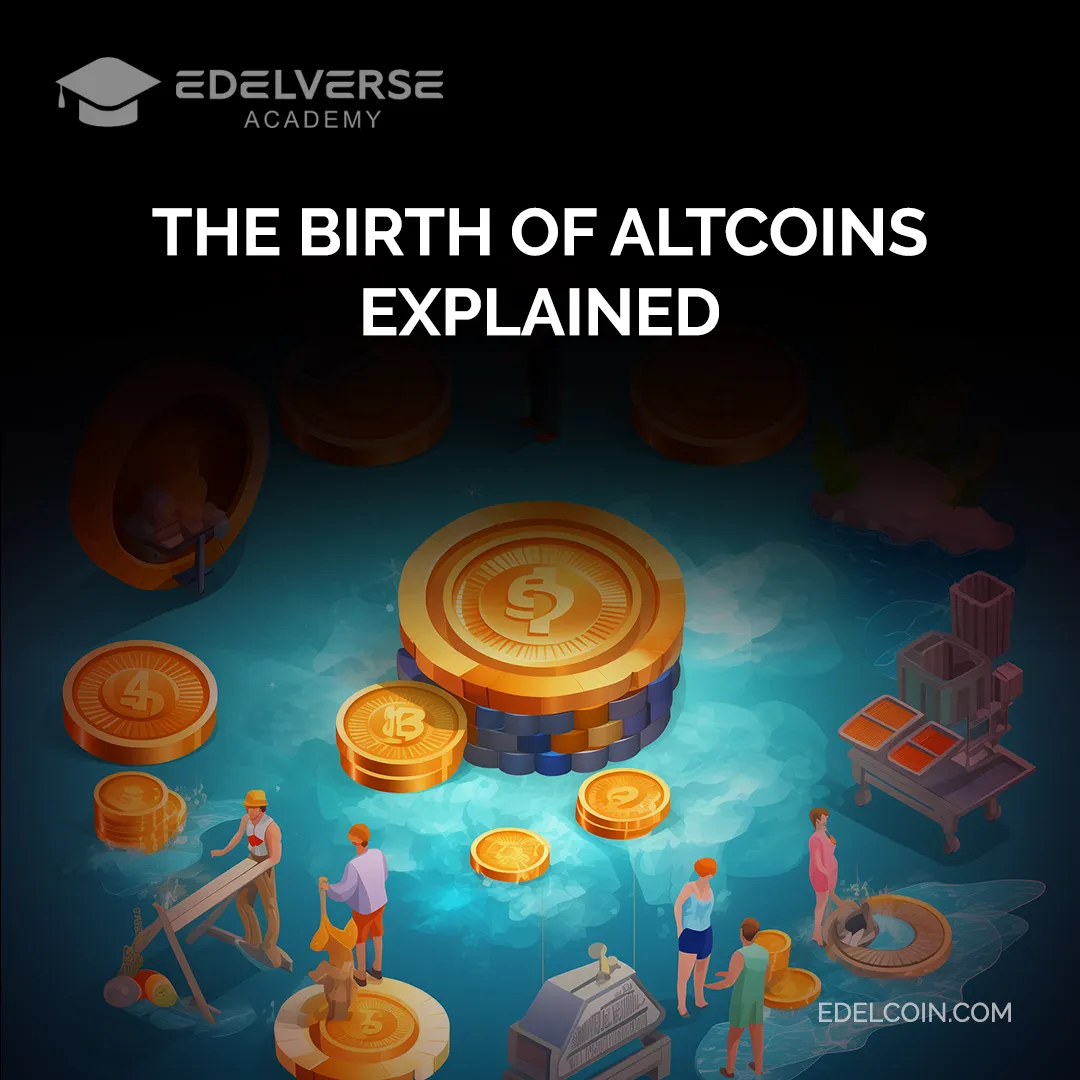
The Birth of Altcoins
Introduction
While Bitcoin paved the way for decentralized digital currencies, it wasn’t long before other cryptocurrencies emerged to address its limitations or introduce new features. These alternative cryptocurrencies, known as altcoins, now form a crucial part of the crypto ecosystem. From offering faster transactions to supporting smart contracts and decentralized applications (dApps), altcoins have diversified the applications of blockchain technology. This article explores the origins of altcoins, their evolution, and how they complement the broader cryptocurrency market.
What Are Altcoins?
The term “altcoin” refers to any cryptocurrency other than Bitcoin. As of today, thousands of altcoins are in circulation, each with unique use cases and innovations. Some altcoins aim to improve upon Bitcoin's design by addressing issues such as scalability, transaction speed, and energy efficiency. Others introduce entirely new functionalities, such as decentralized finance (DeFi) or non-fungible tokens (NFTs).
Types of Altcoins
- Forks of Bitcoin: Some early altcoins, such as Bitcoin Cash (BCH) and Bitcoin SV (BSV), were created as forks of Bitcoin's blockchain to offer faster or cheaper transactions.
- Smart Contract Platforms: Ethereum (ETH) introduced a programmable blockchain that could run dApps and smart contracts, sparking the rise of platforms like Cardano (ADA) and Solana (SOL).
- Privacy Coins: Cryptocurrencies like Monero (XMR) and Zcash (ZEC) focus on providing anonymous transactions to enhance user privacy.
- Stablecoins: Unlike volatile cryptocurrencies, stablecoins like Tether (USDT) and Edelcoin (EDLC) are designed to maintain a stable value by being backed by fiat or assets.
- Meme Coins and Experimental Tokens: Dogecoin (DOGE) and other meme-based coins started as jokes but gained popularity due to community support and celebrity endorsements.
Why Altcoins Emerged
Bitcoin was revolutionary, but it wasn’t without limitations. Its slow transaction speeds, limited scalability, and high energy consumption created opportunities for developers to experiment with improvements. Additionally, Bitcoin’s focus on being a decentralized store of value left room for other projects to explore different use cases. Altcoins were born from the desire to:
- Improve Transaction Speed and Scalability: Litecoin (LTC) was created to offer faster block times than Bitcoin, while Solana and Polygon introduced high-speed networks for large-scale transactions.
- Enable Smart Contracts and dApps: Ethereum’s introduction of programmable contracts paved the way for decentralized applications and the booming DeFi sector.
- Focus on Privacy: Bitcoin transactions are pseudonymous but still traceable. Altcoins like Monero and Zcash addressed the demand for complete transaction privacy.
- Stabilize Value: The volatility of Bitcoin inspired the creation of stablecoins—digital assets tied to stable fiat currencies or real-world assets. Edelcoin is a modern stablecoin that bridges traditional assets with blockchain efficiency.
Ethereum and the Smart Contract Revolution
Among the earliest altcoins to make a significant impact was Ethereum. Launched in 2015, Ethereum enabled developers to create decentralized applications on its blockchain using smart contracts—self-executing contracts with the terms directly written in code. This new capability sparked a wave of innovation, making Ethereum the foundation of the DeFi ecosystem and NFTs.
Today, Ethereum’s success has inspired new altcoins like Cardano (ADA) and Polkadot (DOT), which offer improved scalability, lower fees, and new governance structures. These altcoins showcase how cryptocurrencies continue to evolve beyond Bitcoin’s initial concept.
The Role of Stablecoins in the Altcoin Ecosystem
While many altcoins seek to improve or expand on Bitcoin’s use case, stablecoins address one of the crypto market's greatest challenges: volatility. Stablecoins are pegged to a stable asset, such as the US dollar or a basket of commodities, to provide a consistent value.
Edelcoin, a modern asset-backed stablecoin, takes this concept a step further. Unlike fiat-collateralized stablecoins like Tether (USDT), Edelcoin is backed by precious and base metals. This asset backing provides intrinsic value while maintaining the stability required for digital payments and e-commerce. Launched on the Ethereum and Polygon blockchain, Edelcoin also benefits from low transaction fees and high-speed transfers, making it a reliable choice for real-world financial applications.
The Future of Altcoins
The birth of altcoins has driven innovation in the cryptocurrency space, giving rise to a wide range of applications, from decentralized finance to digital collectibles. As blockchain technology matures, we can expect further specialization and new projects aimed at solving existing challenges like scalability, interoperability, and environmental impact.
Edelcoin, for instance, represents the next phase in the evolution of cryptocurrencies by combining blockchain’s transparency and efficiency with real-world asset backing. As more stablecoins and innovative altcoins emerge, they will complement Bitcoin’s role as a store of value and help cryptocurrencies gain broader acceptance in everyday use.
Conclusion
The creation of altcoins marked a pivotal moment in the evolution of the crypto landscape. From improving upon Bitcoin’s limitations to enabling entirely new use cases, altcoins have expanded the possibilities of blockchain technology. Stablecoins like Edelcoin represent the future of digital payments by addressing the volatility of traditional cryptocurrencies and providing stability backed by real assets. As the cryptocurrency market continues to evolve, altcoins will play a vital role in driving innovation and ensuring that blockchain technology reaches its full potential.

Test Your Knowledge
- What is an altcoin?
a. Any cryptocurrency other than Bitcoin
b. A coin backed by gold only
c. A digital collectible - What inspired the creation of altcoins?
a. Bitcoin's fast transactions
b. Bitcoin’s scalability and energy consumption challenges
c. Lack of user interest in Bitcoin - What makes Edelcoin unique among stablecoins?
a. It is backed by metals
b. It offers highly volatile returns
c. It does not use blockchain technology
Correct answers: 1a, 2b, 3a.
Contents





